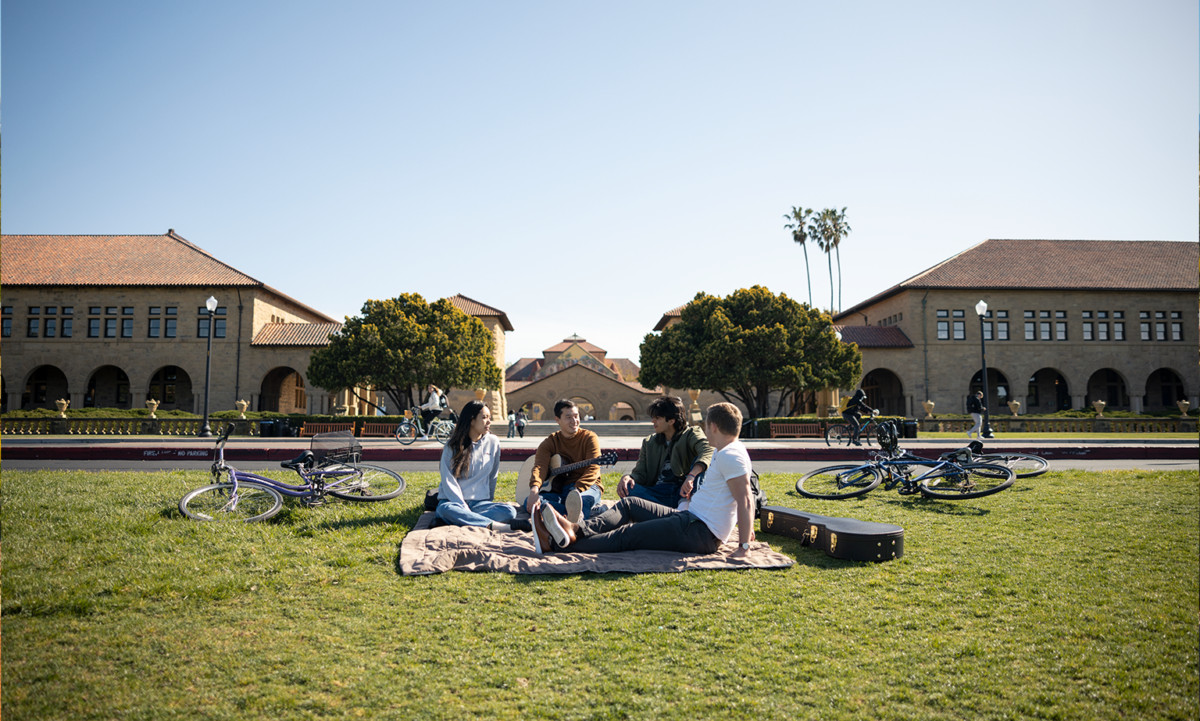Stanford University, a name synonymous with academic excellence and innovation, is situated in the heart of California’s vibrant San Francisco Peninsula. But precisely where is this esteemed institution located? Stanford’s sprawling campus occupies 8,180 acres, placing it geographically at the center of the peninsula, a region known for its technological prowess and stunning landscapes.
Nestled in this prime location, Stanford’s land is a significant feature of the area, encompassing 49 miles of roads and intricate infrastructure. This includes two independent water systems, three dams, and multiple reservoirs, highlighting the self-contained nature of the university’s grounds. The campus is not just about infrastructure; it’s also rich in diverse spaces, from a historic equestrian barn to a biological preserve and even an educational farm, showcasing the breadth of Stanford’s resources. The Central Energy Facility further exemplifies Stanford’s commitment to efficiency, utilizing advanced heat recovery and thermal storage systems for heating and cooling. For those curious to explore, both virtual and self-guided walking tours are readily available, offering an immersive glimpse into campus life.
 Aerial view of Stanford University campus showcasing greenery and buildings
Aerial view of Stanford University campus showcasing greenery and buildings
Stanford’s Location Across Jurisdictions
Interestingly, the Stanford campus isn’t confined to a single city or county. It extends across seven different governmental jurisdictions, reflecting its substantial size and regional impact:
- 4,017 acres reside within unincorporated Santa Clara County.
- 2,700 acres fall into unincorporated San Mateo County.
- 1,161 acres are located in Palo Alto, a city closely associated with Stanford.
- 114 acres are within Woodside.
- 111 acres are situated in Menlo Park.
- 76 acres are in Portola Valley.
- A smaller 1 acre portion is in Los Altos Hills.
This diverse distribution culminates in the 8,180 total acres that make up the Stanford campus, illustrating its expansive footprint across the peninsula.
Key Campus Features and Proximity
Beyond its acreage, Stanford boasts an impressive array of features. The campus is home to approximately 630 buildings, encompassing a massive 17.9 million square feet. Nature is abundant with around 26,000 trees, 25 fountains, and over 1,000 plant species, creating a beautiful and green environment conducive to learning and exploration.
For retail and commercial activities, the 70-acre Stanford Shopping Center hosts over 140 retail stores, while the 700-acre Stanford Research Park is home to more than 150 companies, fostering a strong link between academia and industry. Residential facilities are extensive, including 1,162 owner-occupied housing units for faculty and 2,120 rental units for faculty and staff, creating a vibrant on-campus community.
Stanford Redwood City Campus
Extending beyond the main campus, Stanford also has a significant presence in Redwood City. The 35-acre Redwood City campus, opened in 2019, is located about a mile from downtown Redwood City and five miles from the main Stanford campus. This campus is a hub for over 2,000 Stanford staff and houses essential support services for the university’s research and educational missions. Facilities at Redwood City include the Cardinal Cafe, a Recreation and Wellness Center, and the Pine Cone Children’s Center, creating a comprehensive and supportive environment.
Transportation and Campus Accessibility
Navigating the Stanford campus is facilitated by a robust transportation network. With over 10,400 bikes on campus daily, Stanford is recognized as a Bicycle Friendly University. The free Marguerite shuttle system, comprising 49 buses across 19 routes (including 41 electric buses), ensures easy movement across the large campus. Stanford also promotes sustainable commuting by offering free transit options on various public transportation systems, vanpool subsidies, and a large Zipcar fleet. The Stanford Transportation website provides extensive resources for commute planning and campus navigation.
Ensuring Campus Safety
Safety and security are paramount at Stanford. The Stanford University Department of Public Safety (SUDPS) operates 24/7, providing law enforcement, security, and emergency services. SUDPS personnel, including sworn officers who are reserve Deputy Sheriffs, are committed to delivering high-quality public safety services. The department publishes the Stanford Safety, Security and Fire Report annually, accessible on their webpage, along with safety resources like the SafeZone mobile app. SUDPS is located at 233 Bonair Siding, and some departments may contract additional private security services.
Sustainable Practices at Stanford
Stanford is a leader in sustainability, demonstrated by its innovative Central Energy Facility, which shifted the university from a 100% fossil fuel-based energy system to an electrically-powered heat recovery system. Stanford is committed to reducing its environmental impact and fosters a culture of conservation. Notably, Stanford is 100% powered by renewable electricity. The Sustainable Stanford website offers more details on these initiatives.
Since 2011, Stanford has achieved an 80% reduction in campus greenhouse gas emissions and a 29% reduction in campus energy use per square foot since 2009, highlighting significant environmental progress. Furthermore, Stanford prioritizes local and sustainable food sources, with 76+ local farms supplying food year-round. Water conservation is also a key focus, with a 45% reduction in domestic water use since 2001. Waste diversion from landfills is at 69%, and 51% of Stanford’s fleet is electric, showcasing a comprehensive approach to sustainability. The Marguerite shuttle system exemplifies sustainable transportation, with 1,794,633 rides taken, a 21% increase from the previous year, and 62% of commuters using sustainable transportation methods.
In conclusion, Stanford University’s location is not just a geographical point but a defining characteristic of its identity. Situated in the San Francisco Peninsula, Stanford’s vast and multifaceted campus offers a unique blend of academic rigor, natural beauty, and innovative infrastructure, making it a truly exceptional place of learning and discovery.
